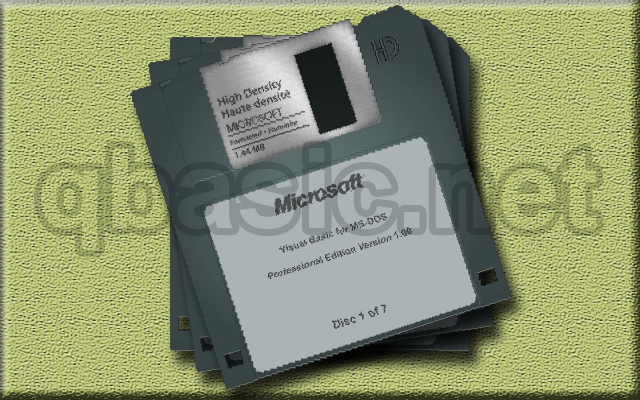Originally 86-DOS, written by Tim Paterson of Seattle Computer Products, DOS was a rough clone of CP/M for 8086 based hardware. Microsoft purchased it and licensed it to IBM for use with Microsoft's IBM PC language products. In 1982, Microsoft began licensing DOS to other OEMs that ported it to their custom x86 hardware and IBM PC clones.
NetBeans contains all the modules needed for Java development in a single download, allowing the user to start working immediately. Modules also allow NetBeans to be extended. New features, such as support for other programming languages, can be added by installing additional modules.
For IBM-specific releases, please see the IBM PC-DOS product page.
Qbasic 7.1 Download Free
Screenshots
Qbasic 7.1 Download
Release notes

MS-DOS 5 introduced numerous new features and was a flagship release for Microsoft. A full screen text editor EDIT has replaced the former line editor EDLIN supplied since the early days of DOS. Microsoft QBasic also shipped in DOS 5 replacing GW-BASIC. MS-DOS 5 also supported 2.88MB 3.5' floppy disks as well as hard disks up to 2GB in size. The memory management was rewritten to allow DOS to utilize the High Memory Area and Upper Memory Area to reduce its usage of conventional memory. Numerous bugs were noticed shortly after launch which lead to the 5.0a update.
This release of DOS was the last of the collaboration between Microsoft and IBM and as a result will be the last result where PC-DOS and MS-DOS are near-identical. This was also the version of DOS used in the OS/2 and Windows NT virtual DOS machine.
When MS-DOS 5 was released the entire market had become dominated by IBM and compatible systems, so specific OEM versions of DOS for machines not using an IBM BIOS were not shipped as in prior releases, with the exception of the still-popular NEC PC-98 series of IBM-incompatible systems.
Installation instructions
To Install: Insert the first disk into your PC or virtualization software and ensure your BIOS is set to boot from a floppy disk. The setup program will install and ask a few questions about your hardware and whether or not you want to install to floppy or hard disk. Applications will be installed into C:DOS unless changed in setup.